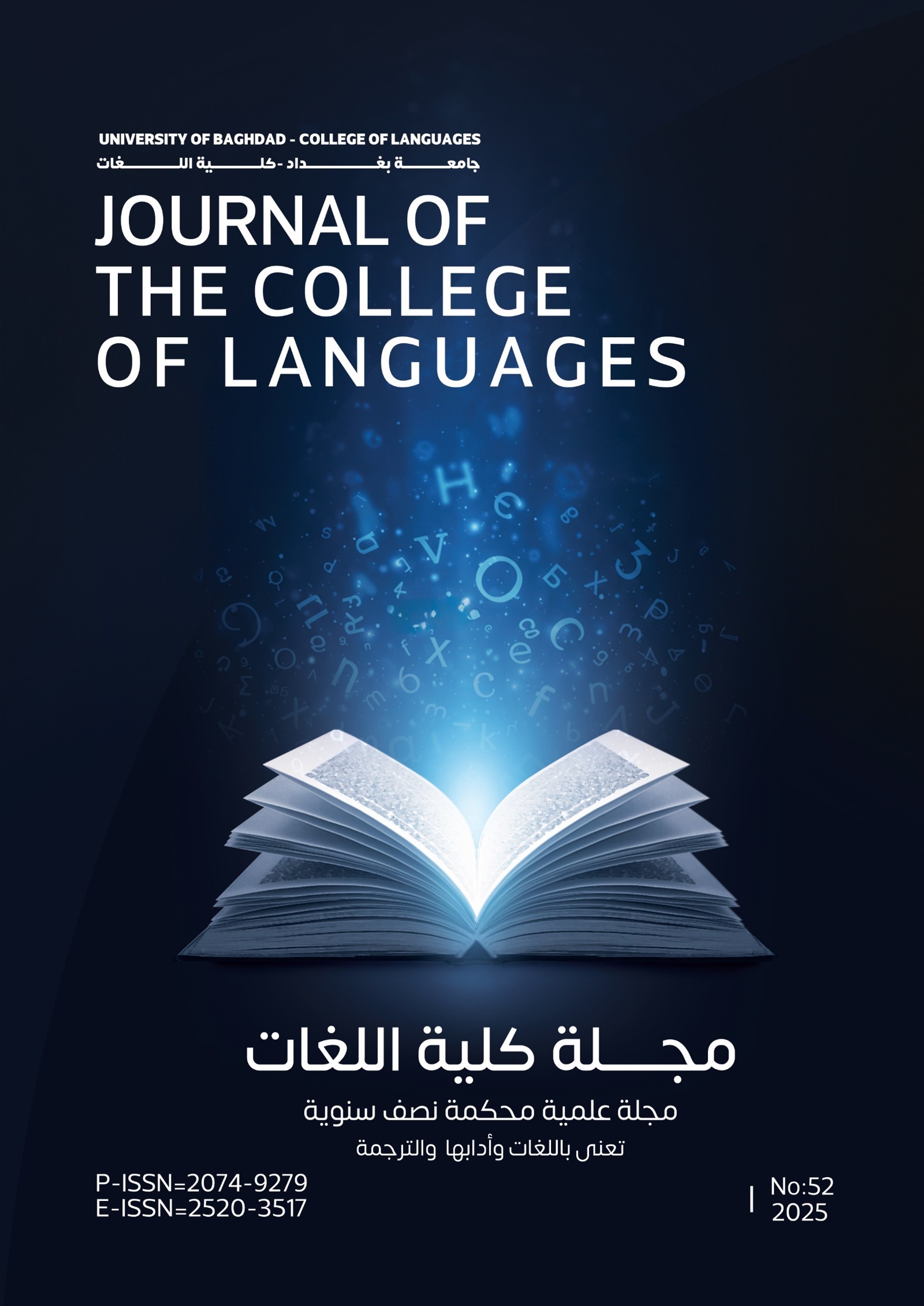A Study of Feminist Stylistic Analysis of Language Issues of Gender Representation in Selected Literary text
DOI:
https://doi.org/10.36586/jcl.2.2021.0.43.0102Keywords:
feminist stylistics, gender, sexism, transitivity choicesAbstract
Stylistics is the analysis of the language of literary texts integrated within various approaches to create a framework of different devices that describe and distinct a particular work. Therefore, feminist stylistics relied on theories of feminist criticism tries to present a counter- image of a woman both in language use and society, to draw attention , raise awareness and change ways that gender represents. Feminist stylistic analysis is related not only to describe sexism in a text, but also to analyze the way that point of view, agency, metaphor, and transitivity choices are unanticipatedly and carefully connected to issues of gender(Mills,1995:1)
The study tries to discuss matters of gender representation in stylistic analysis and how questions and messages of gender are deducted and exposed when reading and interpreting a text. Moreover, the concept of transitivity and how meaning is encoded and adopted by different patterns of transitivity will be analyzed and investigated.
The study has shown that transitivity patterns are used as a device to analyze gender representation as well as to describe the ideational meaning which involves the experiential realization of the world. The results of the analysis of transitivity choices of the selected romantic scene have shown that the whole number of processes are nineteen, the female does five processes in her role as an actor, whereas male shows fourteen which are the highest number in his performance. The male appears to be the active participant agent who is conscious and in control of his action, whereas the female appears to be passive in her quality, volition and being affected or recipient actor. Also, it is seen that feminist analysis tries to create a new message and picture of woman position; this is depicted by the essential role of the readers' assumption and contextual factors of the text in the process of interpretation.

This work is licensed under a Creative Commons Attribution 4.0 International License.
( Received on 21/6/2020 - Accepted on 8/11/2020 - Published on 2/1/2021 )
References
Burton, D. (1982).'Through dark glasses, through glass darkly'. In R.Carter (ed.) Language and Literature. London: Allen & Unwin, pp.195.
Frye, M. (1981). 'Male chauvinism :a conceptual analysis', in M. Vetterling- Braggin (ed.) Sexist Language: A Modern Philosophical Analysis , Totowa ,NJ: Littlefield Adams, pp.7-22.
Halliday, M. A. K. (1971). 'Linguistic function and style: an inquiry into the Language of William Golding's the Inheritor's , in S. Chatman (ed.)
Literary Style: A Symposium , London/ New York: Oxford
University Press, pp. 33o-68.
_____________ (1994). An Introduction to Functional Grammar 2nd edition.London: Edward Arnold.
Mills, S. (1995) . Feminist Stylistics. London & New York: Routledge.
______ ( 2006) ' Feminist Stylistics' , in K. Brown (ed.) Encyclopedia of Language and Linguistics, vol. 12 (second edition) .London: Elsevier.
Mills, S. and Mullany , L., (2011). Language , gender and feminism. Theory, Methodology and practice. London and New York: Routledge.
Norgaard, N.; Montoro, R. and Busse, B. (2010). Terms in Stylistics. India: Replika Press Put Ltd.
Taylor Bradford, B. (1981). A Woman of Substance, London: Grafton.
Wales, K. (1989). Dictionary of Stylistics. Harlow : Longman.
Wareing, S. (1994). 'And then he kissed her: the reclamation of female Characters to submissive roles in contemporary fiction', in k. Wales (ed.) Feminist
Linguistics in Literary Criticism, Woodbridge, SK: Boydell &Brewer.








